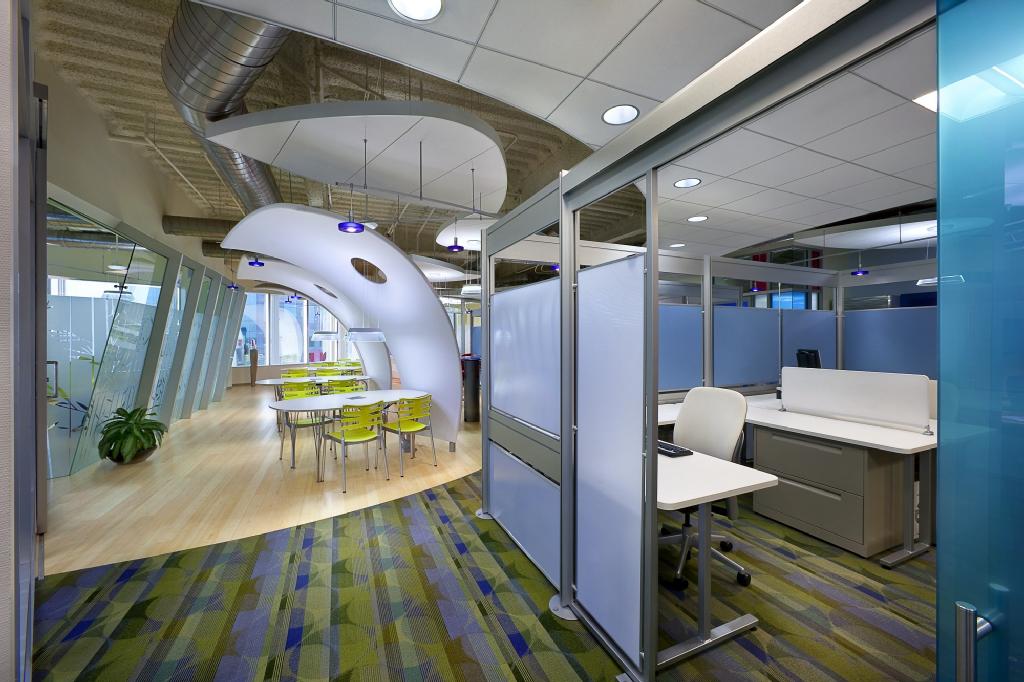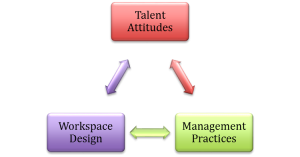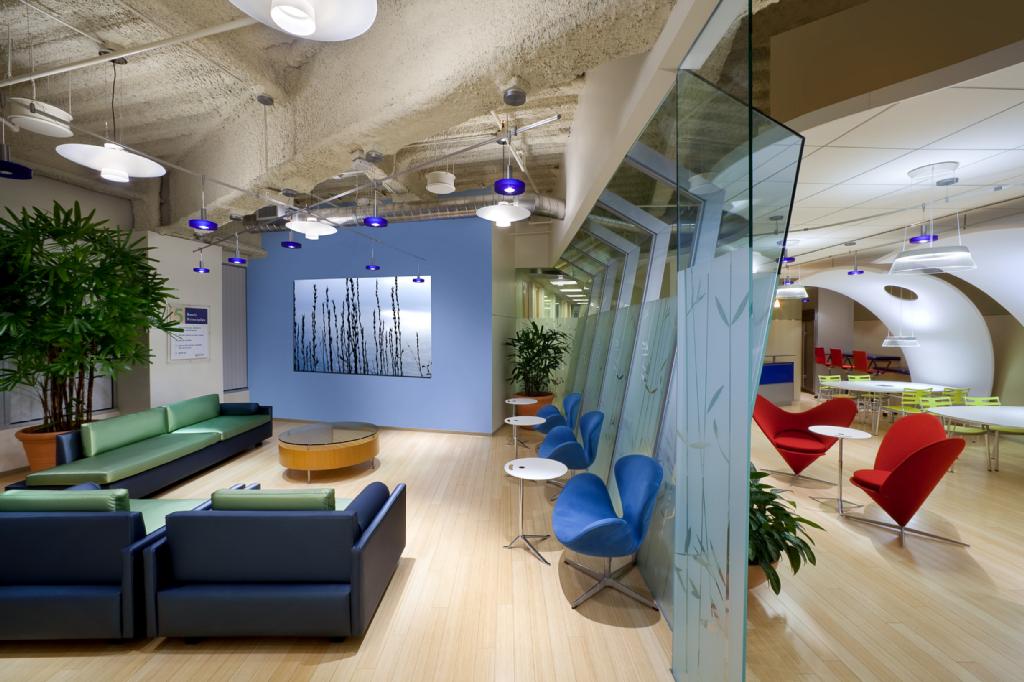
Design Work Spaces for Emergent Workers
01 Dec, 2014
By Dr. Charles Grantham
Changes in work processes directly influence the physical expression of the workplace.
It is hard to argue that the workplace of the future will be vastly different than the workplace of the 1970s or even the 1990s. Shifts in technology, different business models, and increased environmental concern will all be actors. But the biggest driver will be a change in attitudes about work — with the biggest shift coming from the millennial generation (roughly those born between 1980 and 2000). Businesses who provide the real estate and spaces will need to take into consideration new design principles.
Research has shown that these attitudes are not the sole possession of that millennial cohort. In fact, the shift in attitudes is shared by older generations — especially those impacted by the economic downturn and job displacements. Here are at few examples of those different attitudes.
| Overall attitude | There now | The new workers |
| Work in general | Source of self worth and identity | A means to a larger end |
| Authority | Respect it | Ignore formality |
| Work style | Command and control | Collaboratory |
| Rewards | Direct monetary compensation | Total rewards (material and intrinsic) |
| Work/life balance | Work is primary | Work is secondary |
| Personal Purpose | Make a living | Make a difference |
Overall attitudes have moved from a belief in control oriented, formalistic, hierarchical work environments to more loose structures, where emphasis is on work as a secondary activity that needs to by synchronous with a person’s personal purpose. The experience of work will be different. That ties directly to the emergence of different ways of managing the work process and flow. And I suggest that changes in work process then directly influence the physical expression of the workplace, which re-enforces the change in attitude.
The workplace of the future must be designed on a set of principles, which bring into alignment physical expressions of workplace, with new management processes and finally the beliefs and attitudes of those emergent workers.
Attitudes and Management Practice
There are four major changes in workplace practices. First of all there is a shift in the nature of the social contract between worker and employer, what Dan Pink (who writes about work, business and management) has called free agents who are not employees.
There is also a move from hierarchical communication, power flows, and status differences to a more collaborative model. Small collaborative groups will combine temporarily for projects, break apart, and form new alliances. Emphasis is on teamwork and your rewards come from team member evaluation. The picture below is an example of a status less collaborative space.
These first two implications give rise to the third one. We will need far fewer middle managers and more mentors. When people become contracting agents and communication goes from hierarchical to horizontal you can get by with one-third as many middle managers. Why? Because collaboration doesn’t require a constant re-framing of team goals.
Lastly, we need an entirely new conceptualization of what talent is, and how it contributes to team goals. They are called ‘artisans of thought’; they are the people whose ‘job titles’ haven’t been invented yet. They take what is inside their minds and hearts and give it expression. These people are the ones who will be the future primary “value adders” in today’s economic jargon.
HR Policy and Workplace
How do changes in HR management processes relate to design principles?
| New Workforce Entrants | |
| HR Policy Implications | Workplace Design Principles |
| Change in social contract between ‘talent’ and firm |
|
| Power/status horizontal not hierarchical |
|
| Less managers, more mentors |
|
| Rise of ‘artisans of thought’ |
|
Principle 1: Relation in time and space. Talent engagement is on a project or ‘gig’ basis and temporary. Space must be reconfigurable so it can expand, contract, or increase privacy as work requirements change. Ideally it would fall from a ‘kit of parts’ which could be arranged or structured by its’ occupants.
Principle 2: Essential principle of arrangement. All vestiges and symbols of power/status must disappear. No more walled offices; different furniture configurations go away. ‘Neighborhoods’ or perhaps ‘villages’ for large workgroups become more prevalent.
Principle 3: Open access must be provided. Easy wayfinding pathways and visual clues to find a neighborhood within a ‘work city’ should be provided. This could easily be embedded within a mobile technology application such as a building centric GPS.
Principle 4: Less entropy. Easy access to and display of information is key to this. That means ample display space like white walls, smart boards, and tackable surfaces. Minimal physical document storage and cloud storage in basic data and finished work products.
Principle 5: Aesthetics. This is a physical reflection of work group brand. Design and workflow must draw people into the space. This is the visualization of the work culture, which emphasizes collaboration and creativity. The motto is ‘one size misfits all.”
Principle 6: Cost of use. The best way to accomplish this principle is to shorten the return on investment timeline. If workplaces are designed for maximum agility and adaptability, planned obsolescence in the 18-24 month time range significantly lowers cost.
In summary then, the workplace of the future must be designed on a set of principles, which bring into alignment physical expressions of workplace, with new management processes and finally the beliefs and attitudes of those emergent workers. Bringing these attitudes/processes/workplace designs together will facilitate a more efficient and effective work environment.
Now that you have seen a glimpse of the future, what are you going to do to make that happen faster than your competitors?
Dr. Charlie Grantham is a teacher and founder of the Community Design Institute. He has a design studio in northern Arizona where he works with clients to design and build 21st century workspaces and make the cultural shift from ‘command and control’ environments to ones which are more agile and collaborative. Learn more at www.comm-design.net. View his latest book on design at www.foresight2025.com.
Illustration by Sira Anamwong at Free Digital Images.net












